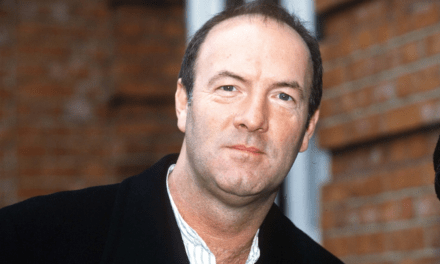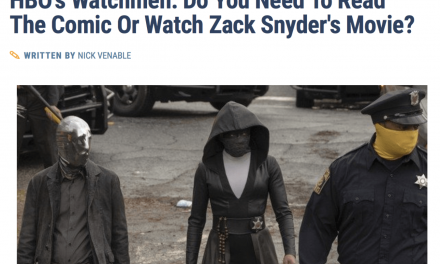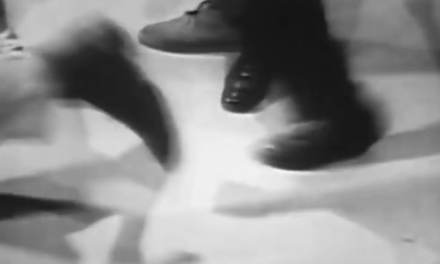Being asked to write a blog so close to Christmas my thoughts, perhaps inevitably, turned to Christmas telly, one of the primary pleasures that I associate with this time of year. My Christmas telly excitement always begins when the broadcasters launch their Christmas idents and promos. But unfortunately this year BBC One’s Christmas promos and idents were a bit of a disappointment. The campaign, called ‘It’s Showtime’, launched with a 30 second teaser trailer on 27 November, adding two 60 second short films, plus a suite of shorter 20 second edits, seven new idents and branded trails for specific programmes from 6 December. The teaser trailer introduced Rob Brydon as the producer of BBC One’s Christmas offering with the two subsequent 60 second films depicting his trials and tribulations, assisted by Sarah Alexander. As they walked fretfully around fictional backstage areas various stars, including Lee Mack, David Walliams, Mrs Brown and the cast of Call the Midwife and EastEnders, interacted in ‘comedic’ skits which saw Miranda chase the Doctor with mistletoe (inevitably ending with a slapstick pratfall) and the kids from Outnumbered destroy parts of the scenery.
The idents, which ended each short promotional film and have also been used to lead into programming over the Christmas period, displayed a simple a tree or star graphic created out of shimmering lights in front of a red curtain, with variations featuring key characters from animated films featuring on BBC One over the holidays, including Shrek, the frog from The Princess and the Frog, and Russell from Up.
In some ways these promos and idents should have been a triumph – appealing to the excitement of seeing a range of fictional characters brought together in one narrative and metaphorically situating BBC One as the home of a wealth of creative talent. Unfortunately, neither quite worked. Fan comment on TVForum claimed the promos looked cheap, citing the cuts to the BBC’s budgets. Others argued that the campaign was the result of employing a marketing company that focused attention on the production of a small number of adverts, rather than spending its budget on the idents which actually get more airtime.
The campaign was created by one of the BBC’s roster agencies, RKCR/Y&R, and produced by Red Bee Media. RKCK/Y&R is an integrated creative agency whose clients include Land Rover, M&S, Virgin Atlantic, the V&A and the NHS. As an integrated agency, RKCR/Y&R is part of a broader shift in advertising that claims that within the contemporary media environment all organisational communications should be co-ordinated in a strategic manner making use of the different benefits of the wide range of available media (see Hackley 2005). Indeed, the elements of RKCR/Y&R’s BBC One Christmas campaign that I encountered over the holidays were just a small part of the overall concept that the company created for the BBC. According to the press release for the campaign ‘Digital plays a key part’. BBC audiences were invited to share their Christmas messages with the nation on BBC One through a social media app featured on the BBC One Facebook page. Meanwhile, the flagship early evening entertainment programme The One Show, included a live light show projected onto the outside of TV Centre, using the music and iconography of the promos and similarly highlighting content from shows such as EastEnders, Miranda, Call the Midwife, and Doctor Who.
As such RKCR/Y&R created an integrated campaign for BBC One that extended beyond the broadcast promos and idents, inviting participation from the audience and moving into the experiential and live.
Having watched a few junctions where viewers’ Christmas messages were shared, I was vaguely aware of these integrated elements of the campaign, but they do not help to recuperate the overall campaign for me. So I want to spend a bit of time thinking about what went wrong with the campaign and why. Firstly, despite the attempt to create an integrated campaign, in conceptual terms the campaign was not integrated at all. There seems to be no apparent link between the Rob Brydon short narratives on the one hand and the ability to share one’s Christmas messages on the other. The underlying idea of showcasing how much talent and programming the BBC packs into Christmas does not run across all elements of the campaign. Furthermore, depicting a rather fretful and anxious Brydon as things go wrong around him hardly captures the Christmas spirit. Indeed, the whole idea behind the campaign focuses too much on what the BBC will be showing rather than on capturing the feeling of Christmas itself (an opinion shared by commentators on digitalspy). I would also concur with the fans on TVForum that the promo films and idents felt cheap. This is not because of the production values – they are well shot and edited – but largely because of the script which lacks the sophistication of the content that it is promoting. This highlights the difficulties of creating narrative promotional content. Such films have to sustain repeated viewing and to do so need to be meticulously crafted. Only the most carefully and skilfully crafted pieces of narrative comedy could sustain the kind of repeated viewing required of these promos. The promos also made the faux pas of utilising the same music that ITV were using to promote their new drama Mr Selfridge, a swing track that seemed far more suited to a period drama set in the first part of the twentieth century than a series of Christmas TV programmes.
BBC Two, Channel 4 and ITV’s graphic approach to promoting Christmas telly was, in my opinion, far safer, but also far more successful. Channel 4 adopted a strategy used by the BBC in the past of focusing upon a key piece of Christmas programming, The Snowman and the Snowdog, a sequel to the Oscar winning adaptation of Raymond Briggs’ The Snowman broadcast 30 years ago on the channel. This charming ident successfully captures the animation style of a film long associated with Christmas and integrates it well with Channel 4’s own style of idents in which the ‘4’ is gradually revealed within the landscape.
ITV’s ident also drew on the nostalgia associated with Christmas, this time creating a Victorian-looking mechanical tree. It doesn’t eschew references to key programmes, such as Coronation Street or Emmerdale, but these are integrated into the ident, re-created as mechanical figures or rotating screens.
Meanwhile, BBC Two used the same idents as last year (which won the award for Best Ident/Branding Package at the 2012 Promax awards). Here the ‘2’ is transformed into a fantastical snowy world with mechanical moons and flying gingerbread men. Different edits start their journey over this world in different places, one depicting turkeys flying out of a window, another beginning with a snowman laughing inside a fridge. The music that accompanies the long pan across this landscape contributes to the creation of a magical world of wonder.
All three ident packages beautifully capture something of the feeling of Christmas, creating a sense of wonder, nostalgia, magic and excitement. They recognise that the Christmas promo and ident is not just about the programmes and the channel, but about the ways in which Christmas telly might capture something of the spirit of Christmas itself.
Catherine Johnson is a lecturer in the Department of Culture, Film, and Media at the University of Nottingham. She is the author of Branding Television and Telefantasy and co-editor of Transnational Television History and ITV Cultures. Her current research examines the broader creative industry sector that produces promotional material for the screen industries.





